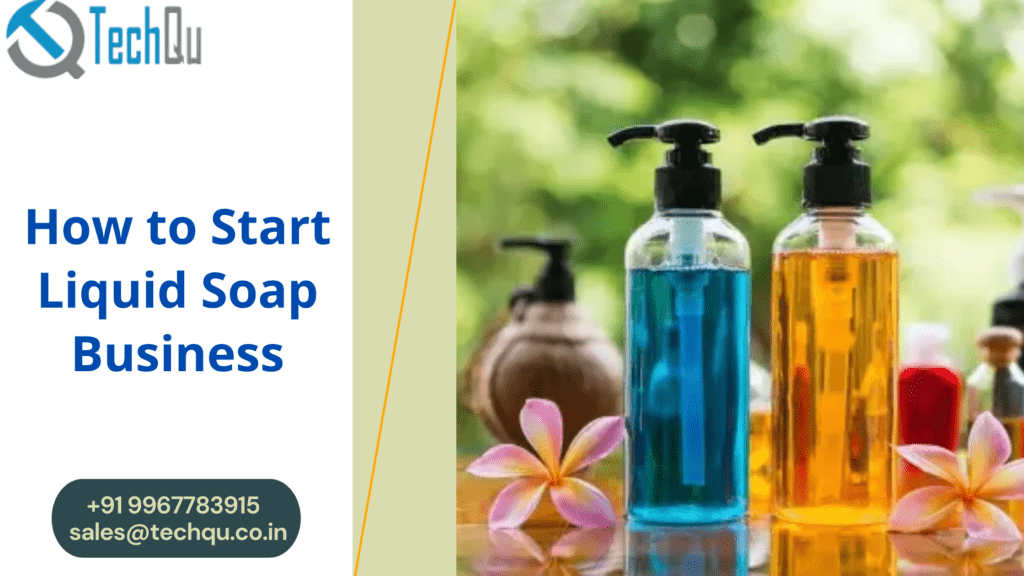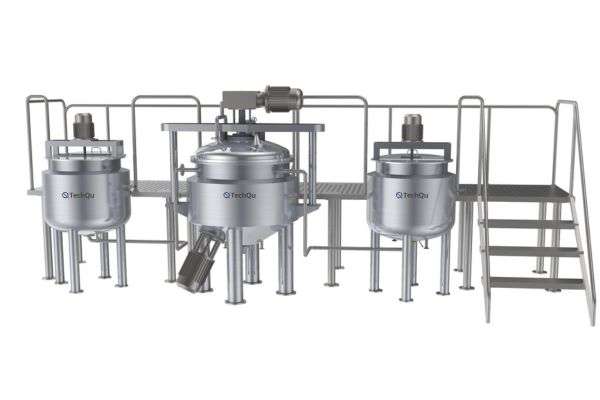Liquid Soap Overview
Liquid Soap is a fast moving consumer good (FMCG) and an essential product used daily by billions of people. The liquid soap industry is divided into various segments – personal use, veterinary use and laundry use. Personal care soap segment is dominated by large consumer goods companies, whereas the veterinary use and laundry use segment is fragmented or dominated by a few large players
Liquid soap includes a variety of soaps like liquid detergent, body wash, car wash, hand wash, baby soap, dish wash, etc. Every type demand different types of licenses and permissions from different Government authority. An entrepreneur having knowledge about the chemical consumable industry or having experience in this field can initiate this venture with substantial capital investment.
Market Potential of Liquid Soap Making Business
The liquid soap-making business includes a wide range of processing, packaging, and marketing operations. The business also demands extensive market research and marketing strategy. It is a consumable item and the demand for it is increasing in rural and urban areas. Total annual soap sale by branded companies is estimated at 14000 tones, while a total soap market is considered to be about 126000 tones.
Liquid soap making business is a profitable business if planned properly. Any beginner looking to start a small scale business in the chemical industry, liquid soap manufacturing business is the one you must consider.
6 Steps to Start a Liquid Soap Manufacturing Company
1. Create a Business Plan for Liquid Soap Making Business
Create a comprehensive business plan for this business. Determine the type of liquid soap that you will be making. In initiating a manufacturing business it is recommended to have a sample project report in hand. Calculate the startup budget with the fix and working capital needed.
Consider the expenses for legal compliances. Clearly, fix your marketing and promotion strategy and expenses. Check the water ph balance of the location where you are going to establish the unit. Choose an attractive catchy name for your product.
2. Business Compliance for Liquid Soap Business
Several different types of permits and licenses are required for toothpaste production. It hugely depends on your location and local state laws. Registration of business according to your ownership pattern is a must.
Business compliances vary from state to state and country to country. In India, you will need to obtain a Trade License, Factory License, and GST Registration. Apply for ‘Consent to Establish’ and ‘Consent to Operate’ both from the Pollution Control Board. Also, you will need to have EPF & ESI registration. According to your product specification apply for an ISI mark from BIS Certification Authority.
3. Machinery & Raw Materials For Liquid Soap (Detergents) Production
There are various ways to make liquid soap nowadays. It is advised to talk to machine manufacturers and industry professionals before choosing the process of making liquid soap. However, for production, you will need the following basic machines. The machinery required to make Liquid Soap Detergent are as follows:
-
- S.S. Vessel
- Bottle filling machine
- Storage Tanks
- Testing & laboratory equipment
In addition, there will be a requirement for raw materials and chemicals for producing liquid soaps. Some chemicals and raw materials for making liquid soap are as follows:
-
- Acid Slurry
- Caustic Soda
- Urea
- Colour
- Perfume
- Plastic bottles & Canes
- Corrugated boxes
Start the business on a small scale. As your business grows shift to full-scale production. Select and purchase machines according to the required production output. It is advisable to start with a semi-automatic plant establishment. You will need to have a mixing unit with the stirrer with definite rpm. Filling and sealing unit specialized for packaging. You will need to establish a water treatment plant to treat hard water into soft water.
As per your formula gather raw materials. Purchase only quality raw material from reliable vendors. Quality product only can be made from quality raw materials. Concentrate on packaging materials with the quality of shelf appeal and ease of use. Attractive leak-proof containers will add value to your finish products.
4. Learn the Soap Making Process in depth
Soap making is a relatively easy process and can be easily done with minimal investment in plant and equipment. Beauty soap or personal use soap can be made in 3 steps – preparation of soap base, preparation of final base and stamping. The primary raw material for soap manufacturing is oil and fats. Based on the types of raw material used and the ad-mixture used, the finished product varies. Typical toilet soaps are made by combining liquid fats (like vegetable oils or animal fat) with an alkali like sodium hydroxide (also called lye). In addition to the above raw material, clear soaps typically contain glycerin and sorbitol and anti-bacterial soaps rely on triclosan, a substance that kills bacteria and helps prevent fungus growth.
5. Investment Cost of Starting Liquid Soap Manufacturing Unit
The investment required for starting a small soap manufacturing business is minimal. A soap manufacturing unit setup with an investment of about Rs.15 lakhs, can generate revenues of up to Rs.50 lakhs and a profit of Rs.8 lakhs, if operated successfully.
6. Promote Your Liquid Soap Business
As liquid soap is a consumer durable item it demands huge brand promotion. The most effective media to attract housewives are television and FM Channels. Focus on understanding the customer segments in both a data sense and a very human way.
Unless you have a definitive strategy for selling your items, all the hard work will go in vain. Reach out to distributors and retailers and convince them to sell your products. A well-organized distribution network is a key to being successful in this business. Create brochures, pamphlets, and visiting cards, and meet as many potential sellers as possible.
For extensive market penetration, you need to establish a strong dealer network. Do some outdoor advertising activities like hoarding, events.
Concentrate on catchline. It should be clearly describing the product.
Create an online presence of your business.
Harnessing customer data to understand preferences, buying trends, and shortfalls in conversion or satisfaction are critical. Offer annual sales promotion incentive to your channel partners. In advertisement focus on the benefits of its usage.
Explore
Related Products




